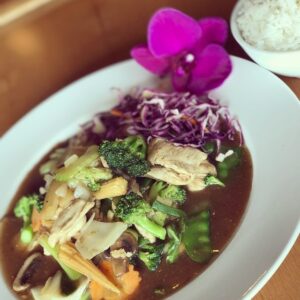
By David Ho
ThreeChingdoms
Commentary
No matter what part of the world you’re in, chances are a Michael Jackson song will induce an uncontrollable desire to bob your head. K-Pop is enjoying a surge in popularity in the United States even among people with no knowledge of the Korean language. There’s less than a handful of Chinese players in the NBA but China remains the League’s second largest market. There are few things in life that can unite people from different backgrounds and cultural upbringings. Sports and music aren’t the only art forms capable of creating invisible bonds, and for a brief moment suspend differing opinions and political views. When people travel to a different country, or even a different city within the same country, the local cuisine is often the highlight of the trip.
When you go to Naples, you understand the origins of the modern pizza, and realize the ingredients of the Pizza Magherita were selected to represent the colors of the Italian flag. Burgundy, France isn’t just a haven for pretentious wine connoisseurs, wine fuels the local economy and plays a crucial role in the sustenance of the community. The Taiwanese Bao reflects the journey of Fuijanese people escaping China to Taiwan during the civil war, bringing with them a dish that has become a staple in the world renowned Taiwanese night market scene. It’s the subtleties in food that we often take for granted that makes food so powerful. For those who are culturally curious, food is often the gateway to another culture, and we should take responsibility in how that gate is presented.
If food has the power to tell the history of a nation and culture, then fusion chain restaurants are the clunky subtitles found in bootleg DVDs in the back alleys of China. You have an idea of the message they’re attempting to convey, but the message is just muddled enough to make you question whether you’re correct or not. Two large franchises which will not be named have expanded throughout the country, and have a combined 2000+ stores internationally. One of them which claims it sells authentic Chinese cuisine opened their first store in China this year, and as someone who perhaps overvalues the importance of authenticity, I couldn’t help but wonder, “Will the local Chinese see this as American food or Chinese food?” Because it sure isn’t the latter. I took a look at the franchise’s recent menu which can be found on their website, and I found dishes with origins from these countries:
– China
– Mongolia
– Singapore
– Thailand
– Malaysia
– Hong Kong
– Japan
– Taiwan

When a restaurant presents itself as a Chinese restaurant, and attempts to take on dishes from every Asian country without paying tribute to the origins of these cuisines, the message they are delivering is a confusing one. If this is someone’s gateway into Chinese food and culture, this becomes their standard and measuring stick of what Chinese cuisine is. We can’t present Chinese food to dominant culture in the form of a clusterf*ck of cuisines, lacking a genuine attempt and sense of responsibility to explain where the origins of each cuisine. If you haven’t noticed, dominant culture often incorrectly assumes all Asians are similar in culture and tradition. Tackling every famous Asian dish to appeal to the ignorant is reaffirming that we don’t have our unique identities. Instead of serving “Pad Thai” that tastes clearly like whitewashed Chinese stir fry, it’s suffice to say it’s just a Chinese dish inspired by Pad Thai. Communicate to people through a menu the incredible diversity among Asian cultures. We can’t be frustrated at dominant culture for not appreciating ours, and not being able to distinguish between Asian groups if we expose them to half ass’d attempts of authenticity. There are many who don’t have the culinary curiosity of an Anthony Bourdain, they hesitate to venture into the corner Chinatown joint likely named “Dumpling House” or one where the floors are greasy enough to warrant caution, thus large fusion restaurants have the responsibility for genuine representation. Please stop portraying us as a hot pot of sweet and sour pork, sushi and Pad Thai.
I’ll never forget when a co-worker who grew up with one person of color in her city told me “I went to PF Chang’s for the first time the other day, I actually really like Chinese food!”. There is nothing wrong with liking PF Chang’s, but equating Chinese cuisine to PF Chang’s is akin to dumping cheese and steak in a bun with cilantro and sesame powder, and telling people in China that it’s Philly Cheesesteak. It’s disingenuous and lazy. Asian American immigrants have often expressed regret over losing their identity, forgetting the language and ignoring the traditions and norms of their motherland. Loss of language and tradition are obvious, less tangible are the messages we send through our food. Food doesn’t just provide mouth pleasure. Food evokes nostalgic emotion, food transcends boundaries and like music, it tells a story. Instead of only focusing on the ingredients and caloric content, it’s time we start focusing on the content of the story.
AsAmNews has Asian America in its heart. We’re an all-volunteer effort of dedicated staff and interns. Check out our Twitter feed and Facebook page for more content. Please consider interning, joining our staff or submitting a story.

